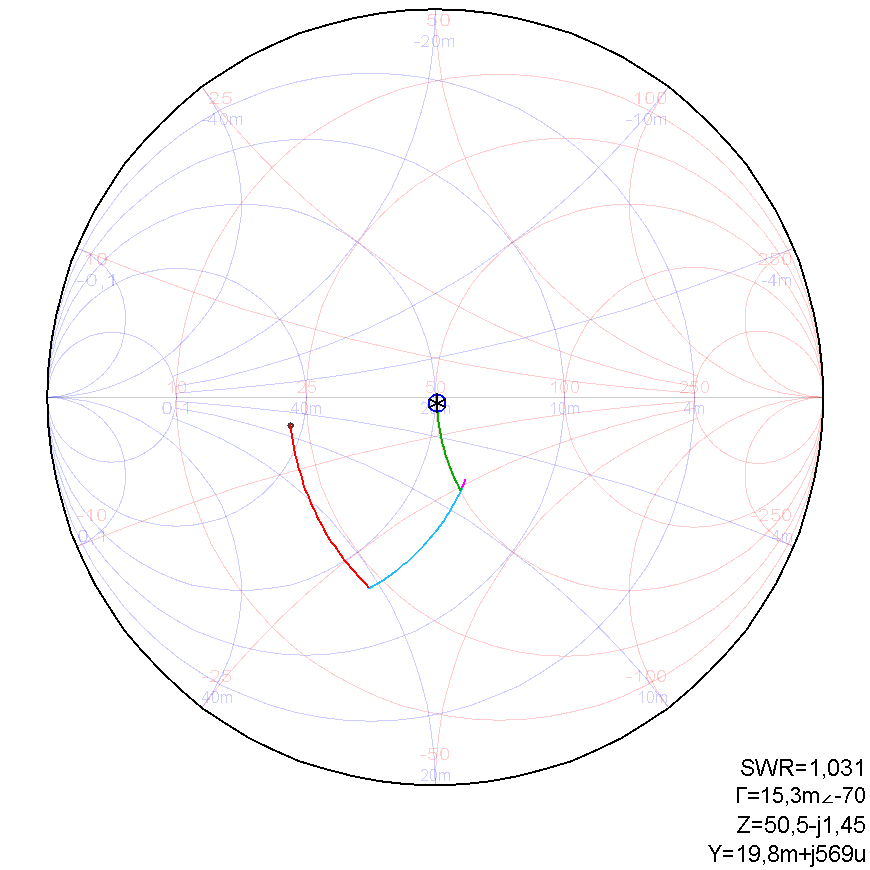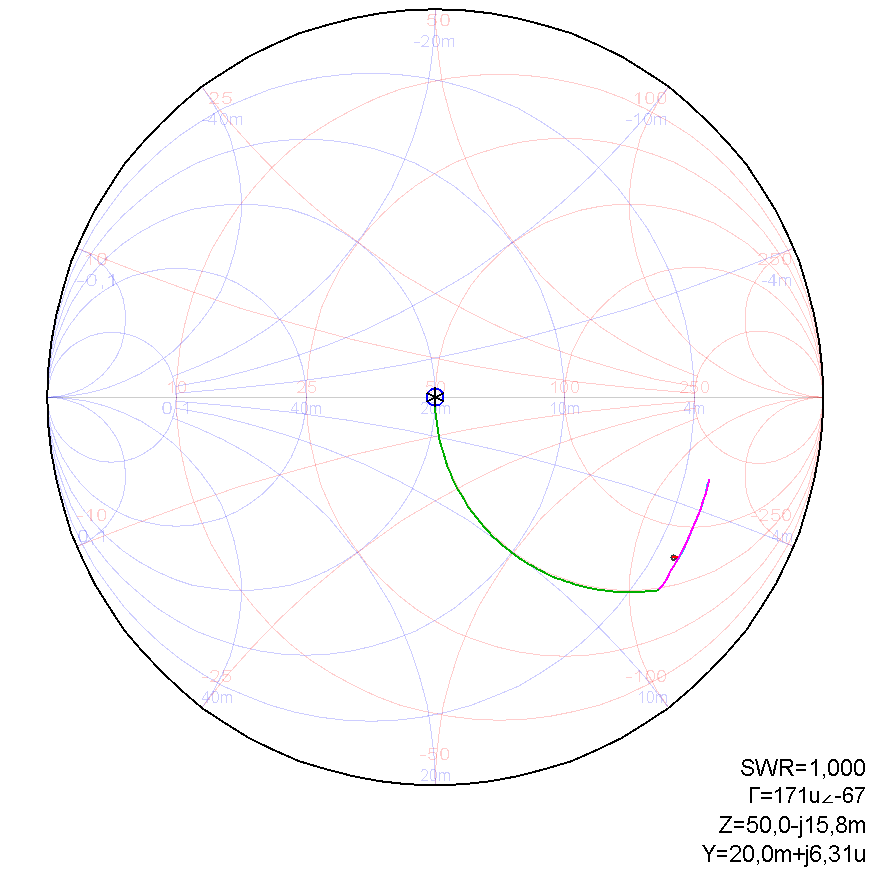SWRA730 February 2022 CC1311P3 , CC1311R3 , CC1312R , CC1312R7 , CC1314R10 , CC1352P , CC1352P7 , CC1352R , CC1354P10 , CC1354R10
- Trademarks
- Acronyms
- 1Description of the PCB Antenna
- 2Test Setup
- 3Unmatched Results
- 4Single-Band Matching and Result
-
5Dual Band Matching and Results
- 5.1 433-MHz and 2440-MHz Smith Chart, SWR, Bandwidth, and Efficiency
- 5.2 470-MHz and 2440-MHz Smith Chart, SWR, Bandwidth and Efficiency
- 5.3 490 MHz and 2440 MHz Smith Chart, SWR, Bandwidth and Efficiency
- 5.4 510-MHz and 2440-MHz Smith Chart, SWR, Bandwidth, and Efficiency
- 5.5 868/915 and 2440-MHz Smith Chart, SWR, Bandwidth, and Efficiency
- 6Summary - Bill of Materials and Results
- 7Conclusion
- 8References
5.4 510-MHz and 2440-MHz Smith Chart, SWR, Bandwidth, and Efficiency
Figure 5-19 and Figure 5-20 shows the theoretical Smith chart for matching the antenna for dual-band 510 and 2440 MHz with a theoretical SWR of 1.031 and 1.000.
 Figure 5-19 Theoretical Smith Chart for Dual Band 510 MHz Match
Figure 5-19 Theoretical Smith Chart for Dual Band 510 MHz Match Figure 5-20 Theoretical Smith Chart for Dual Band 2440 MHz Match
Figure 5-20 Theoretical Smith Chart for Dual Band 2440 MHz MatchFurther tuning of the resonance of the antenna was needed after realizing the theoretical match. in Figure 5-21 and Figure 5-22 shows the resulting impedance and SWR which at 1.110 for 510 MHz and 1.098 for 2440 MHz is less than the threshold for a good match of SWR < 2.0. Table 5-7 shows the BOM with components used to relies the matching network given in Figure 1-2.
The bandwidth of the antenna defined by SWR < 2.0 can be seen in Figure 5-22 to be 522.4 – 497.8 = 24.6 MHz for 510 MHz and 2531-2325 = 206 MHz for 2440 MHz.
| Ref. Designator | Murata Part Number | Value |
|---|---|---|
| Z60 | LQP03TN7N5H02 | 7.5 nH |
| Z61 | GRM0335C1HR20BA01 | 0.2 pF |
| Z62 | LQP03TN18NH02 | 18 nH |
| Z63 | GRM0335C1H180JA01 | 18 pF |
| Z64 | LQP03TN27NH02 | 27 nH |
Figure 5-23 and Figure 5-24 shows the radiation pattern of the antenna at 510 and 2440 MHz. Table 5-8 shows the TRP and efficiency for the antenna with the given matching network.
| Figure 43 | Figure 44 | |
|---|---|---|
| Frequency | 510 MHz | 2440 MHz |
| Power setting | 13 dBm | 10 dBm |
| Conducted output power | 11.77 dBm | 9.15 dBm |
| TRP | 5.8 dBm | 12 dBm |
| Efficiency | 25.3 % | 84.1 % |